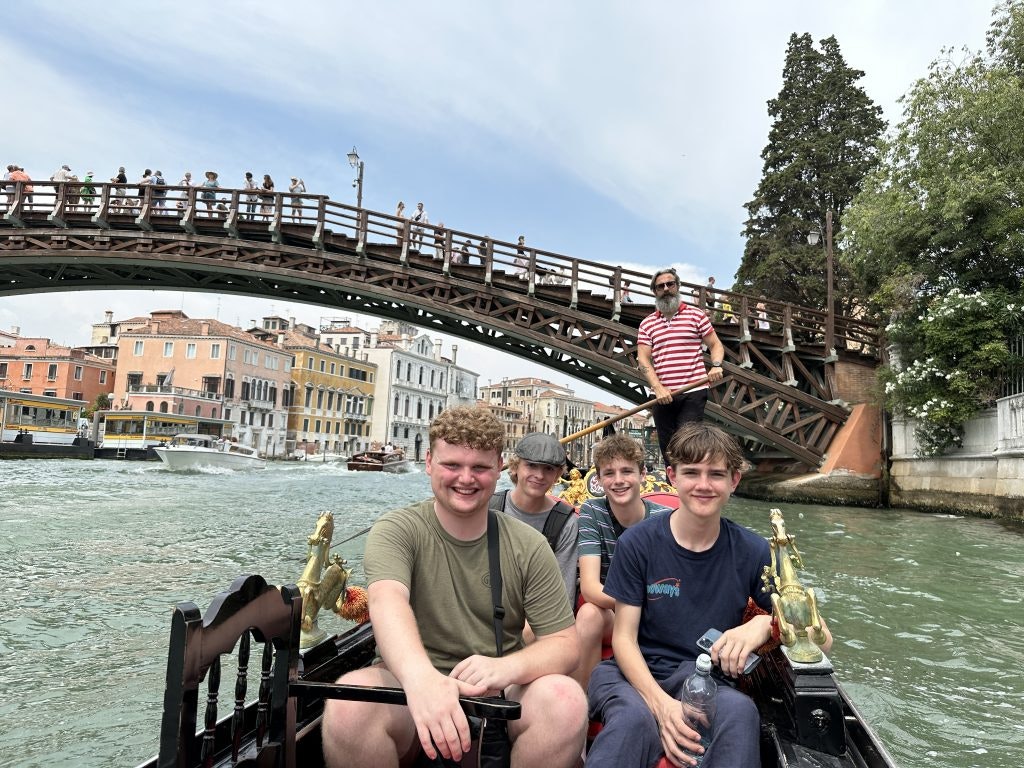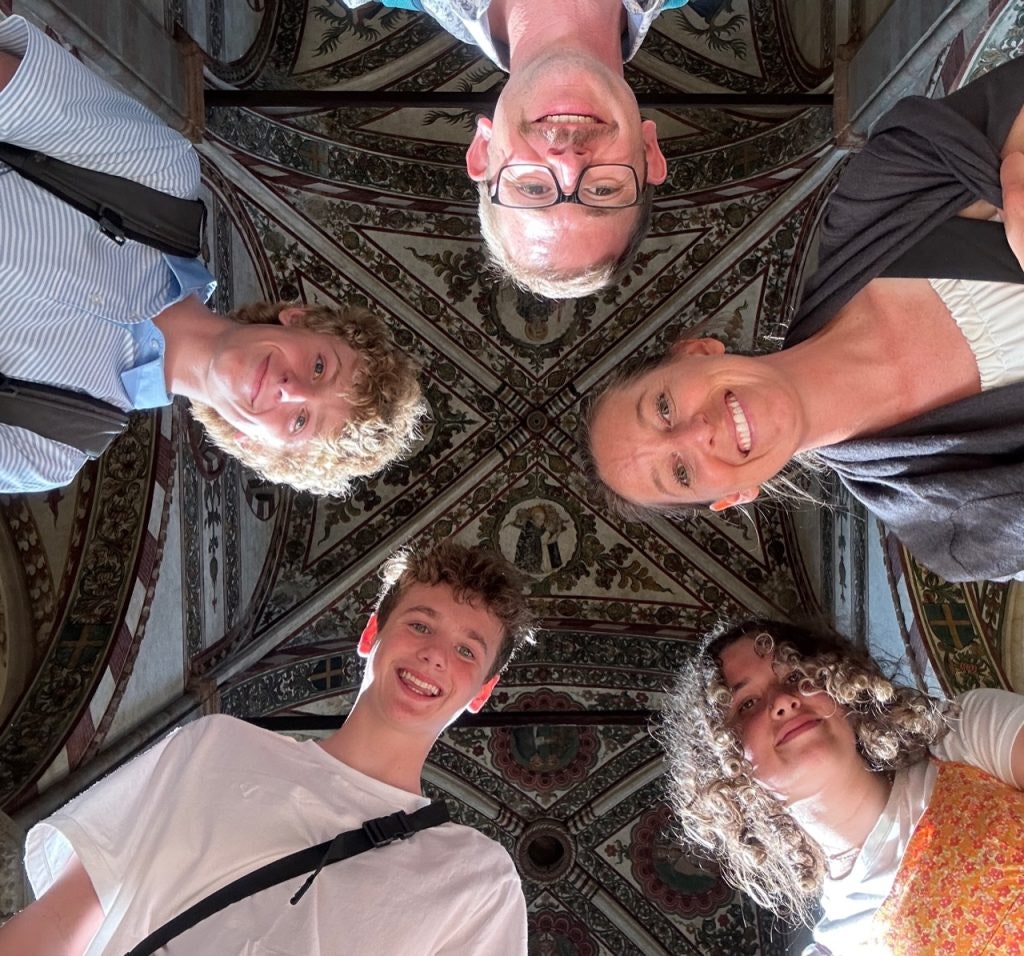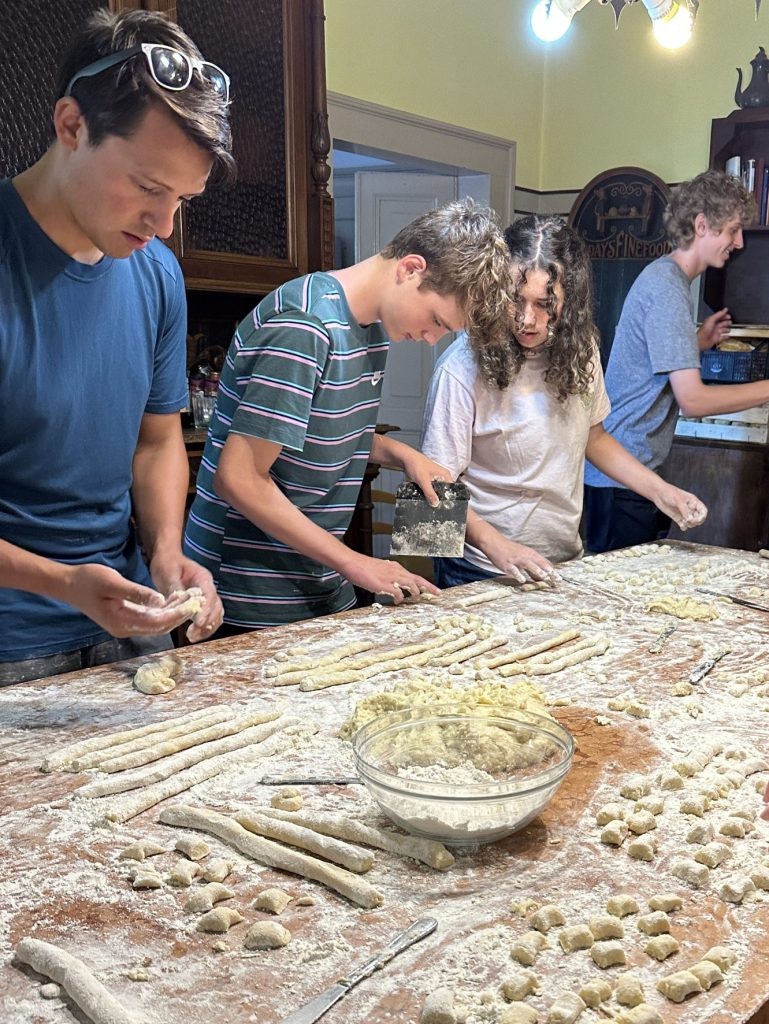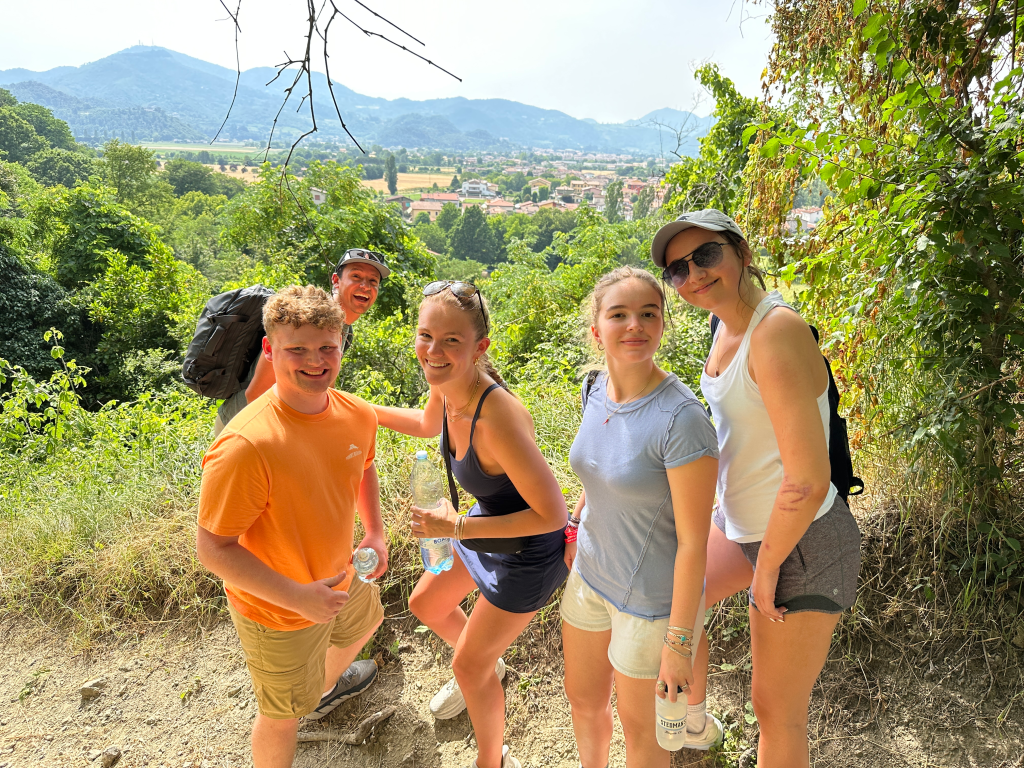For travel enthusiasts, visiting a medieval town in Italy is a lifelong dream. There is nothing more alluring than experiencing Renaissance art in person, wandering the streets of Rome and discovering the treasures of the Eternal City, once the heart of the Roman Empire.
For our Italy Country Director, Nicholas Pompa, each trip to Italy strengthens his connection to his Italian heritage and the country’s rich heritage.
“My great-grandfather came to the United States from Bari, Italy, in the late 1800s, and I grew up in a family with strong Italian roots. As I started to spend more and more time in Italy as I grew up, I realized that our family dinners and traditions were only one tiny piece of the amazing diversity and variety that truly makes Italy such a unique place.”
When you land in Italy, start by taking in the hiking trails and coastal scenery. As you mentally go over your Italy bucket list, get ready to form your connection with everything Italian. Here is a deep dive into the 11 best things to do in Italy.
Find Out the 11 Best Things to Do in Italy
- Stay in Historic Italian Buildings
- Check Out the Arena di Verona
- Hang out in a Piazza
- Take a Gondola Ride
- Learn about Art
- Peruse Works by Local Artisans
- Make Pasta & Enjoy Italian Cuisine
- Explore Italian Lakes and the Amalfi Coast
- Go Hiking
- Speak Some Italian
- Take a Day Trip to Vatican City
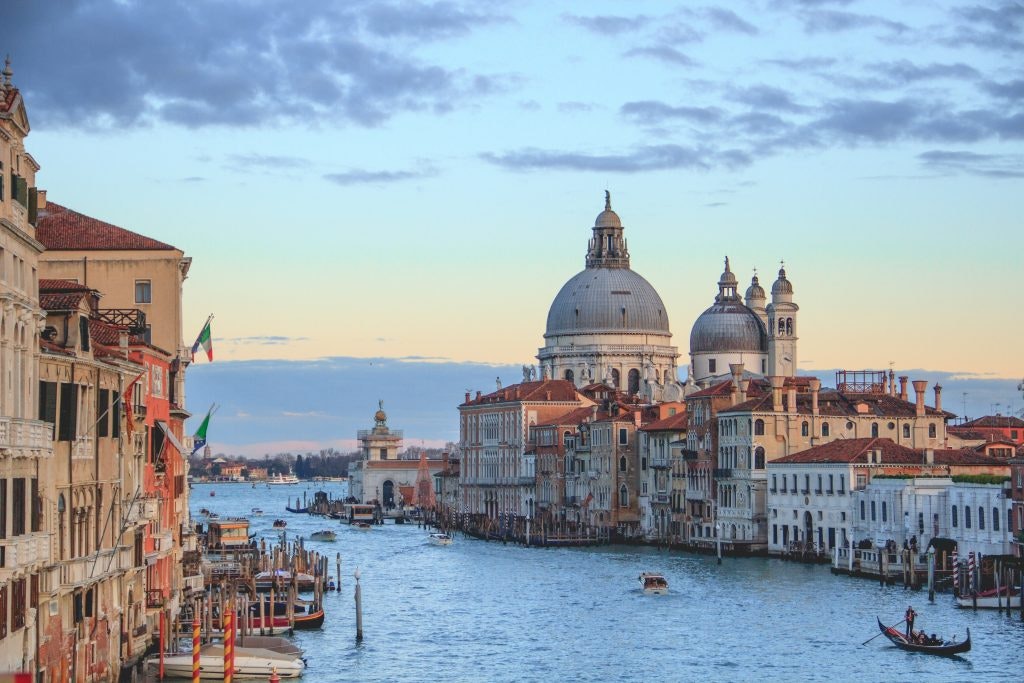
The Grand Canal at sunset, with the Santa Maria della Salute watching over Venice.
1. Stay in Historic Italian buildings
While you’re in Italy, staying in a chain hotel seems downright boring. There are a number of historical sites and centuries-old accommodations in the country that have been renovated to add modern comforts. Try staying in a castle, a historic B&B or an Albergo Diffuso, also known as a “scattered hotel.”
Albergo Diffuso is a form of hotel where guest rooms are spread out across historical buildings in small Italian borghi, or medieval towns. The idea was born in the 1980s to bring tourists to Italy’s smaller yet picturesque destinations without the need to build a brand new hotel. The rooms are designed to minimize environmental impact in both construction and operation, while preserving the original building’s style.
Try this authentic and sustainable accommodation to fully immerse yourself in Italy’s forgotten and ancient history.
2. Check Out the Arena di Verona
An amphitheater is an open-air venue for outdoor entertainment, performances and sports. There are a number of impressive amphitheaters in Italy starting with Rome’s Colosseum, which is a UNESCO World Heritage site and a perfect example of what beautiful ancient ruins look like.
When you visit Rome, head to the historic center to see the largest amphitheater in the ancient world. The Colosseum, completed in 80 AD, was the first freestanding amphitheater not built into a hill. For hundreds of years during the Roman Empire, it was the site of gladiator fights and other violent events. The exact number of people who died within its walls remains unknown.
The remains of the four-story high structure and its underground tunnels are an impressive sight, but Rome’s Colosseum is certainly not the only amphitheater of note.
If you’re traveling in Northern Italy, the Arena di Verona is a site worth visiting, which is still an active performance site. The Arena di Verona is the third-largest remaining Roman amphitheater and the world’s largest open-air opera house in the world. Built in 30 AD, it has stood the test of time thanks to its strong foundation, created by digging the hill known as Pastello and using a concrete base.
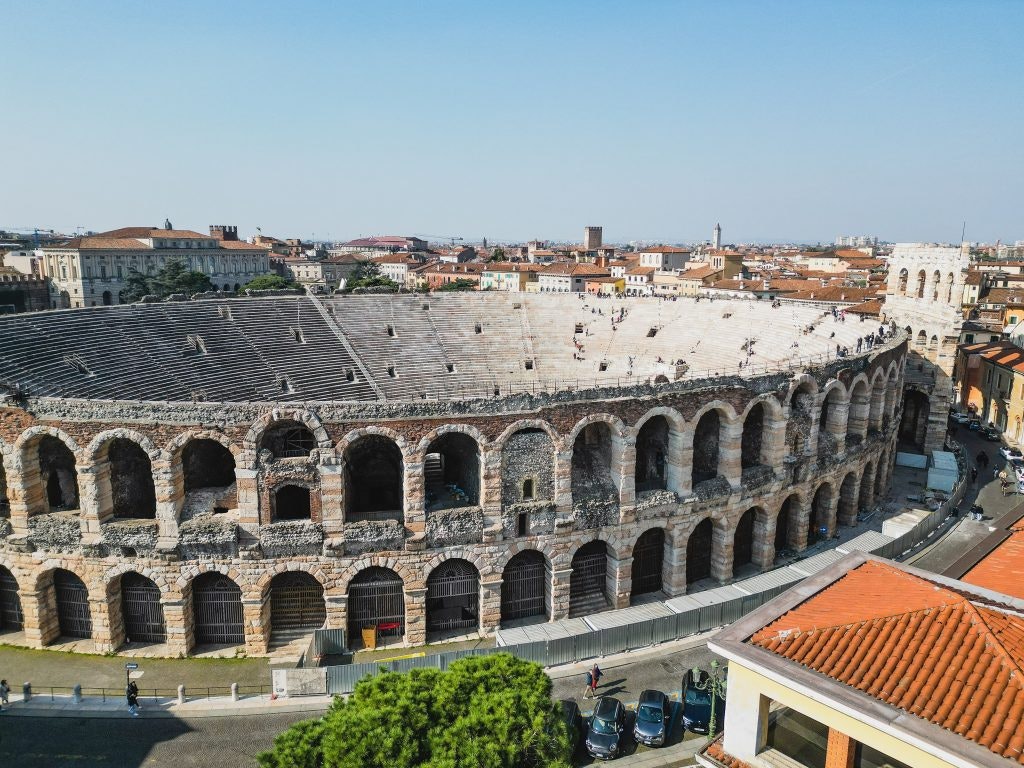
The Verona Arena in Northern Italy is a well-preserved amphitheater.
3. Hang out in a Piazza
Town squares or piazzas are the heartbeat of Italian cities and villages across the country and make a good starting point to delve into each city’s history. The Romans tended to create roads in grids, and the piazzas were constructed where the two main roads crossed. Piazzas were central hubs for religion, government, and commerce, serving as key gathering spots for local residents.
Saint Peter’s Square is a large piazza in the Vatican, often mistaken as Italy’s largest. Outside of the Vatican, Piazza San Marco in Venice is a well-known town square. It’s home to Saint Mark’s Basilica, its bell tower Campanile di San Marco, the museum Museo Correr, and Doge’s Palace, which was the residence and seat of power in Venice for around 900 years.
Another popular piazza is the Piazza del Duomo, home to the Leaning Tower of Pisa. This 56m tower took nearly 200 years to build and first started to lean in the late 1170s due to its soft and unstable foundation.

Rustic Pathways students check out Piazza San Marco in Venice.
Elsewhere in Italy other piazzas of note include Florence’s Piazza della Signoria and Verona’s Piazza Brà and Piazza delle Erbe. In larger towns in Italy you’ll see the generic terms Piazza della Signoria, a “political plaza,” and Piazza delle Erbe, a “plaza of herbs.”
Verona’s Piazza delle Erbe was the ancient Roman forum, bordered by the town hall. It’s adorned with captivating frescoes and a fountain with a statue called Madonna Verona. As an added bonus, a balcony that inspired William Shakespeare is nearby, marking the spot where Romeo is said to have declared his love for Juliet.


